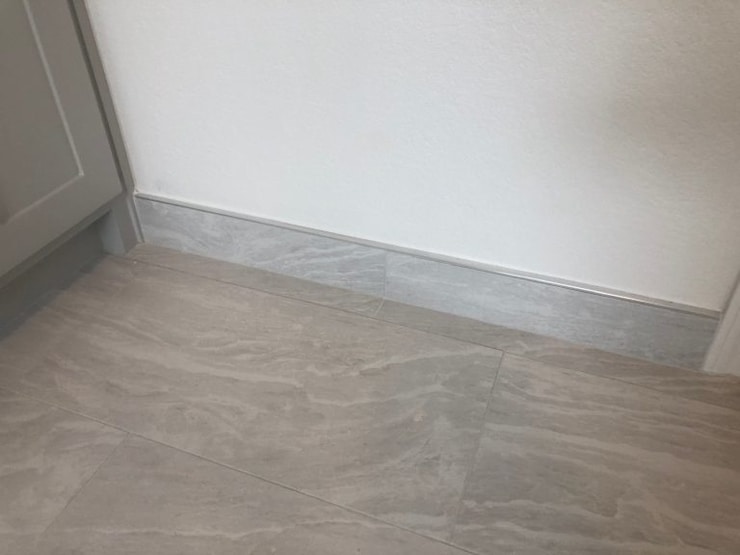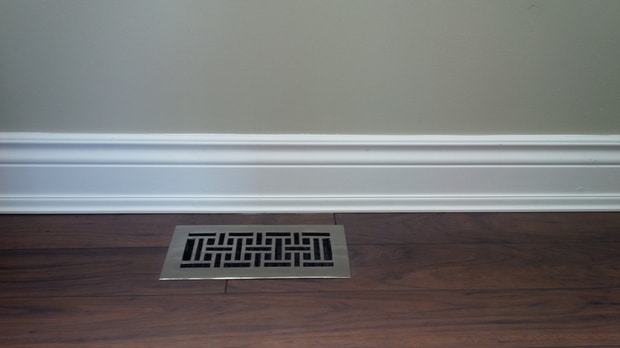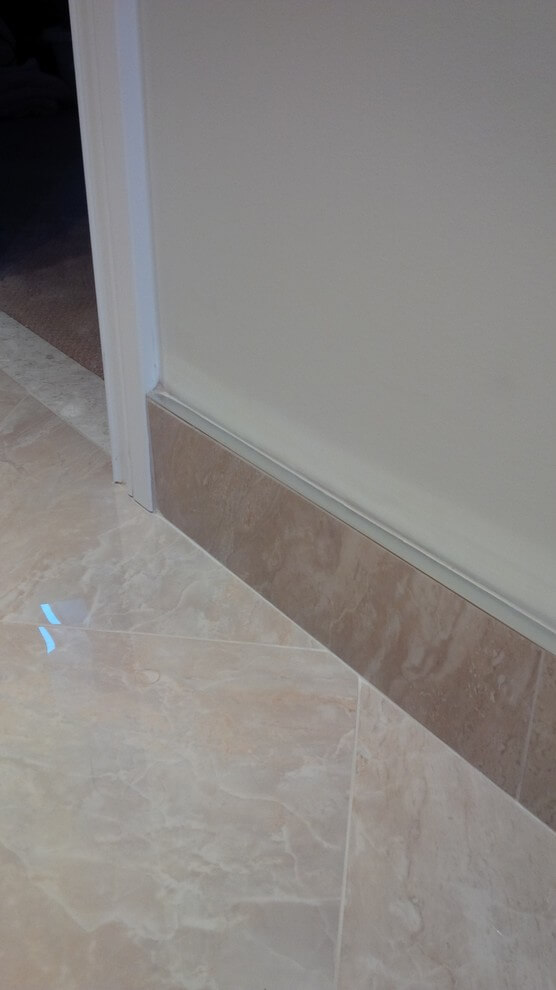Wooden baseboards were among the first baseboards ever to be used in homes worldwide.
But when it comes to bathroom baseboards, are wooden or tile baseboards the best option?
You could use either wood or tile baseboards in the bathroom. But each material has its benefits and drawbacks concerning durability, water resistance, appearance, and price. Whether wood or tile baseboards would be better for your bathroom will be determined by your specific situation and needs.
With many factors to consider, where do you begin?
Start by considering what your bathroom requires along with some research on which material would suit you best.
Don’t be fooled by articles trying to sell you something. Instead, read on as we help you decide what material is right for you with unbiased facts.

Wood Baseboards
Wooden baseboards are the go-to material that you will likely find all across your home.
The types of wood that are commonly used for baseboards are Cherry, Oak, Maple, Walnut, and Pine. There are also more rare and expensive options like Mahagony.

MDF (Medium Density Fiberboard) is a wood composite material used in many homes because it’s inexpensive as well as mold and mildew resistant.
Tile Baseboards
Tile baseboards are not as popular as wood baseboards, but the benefits they bring to the table are starting to catch on, especially in bathrooms.
If your budget allows, they are often the best option for damp areas like the bathroom.

Like the tiles found in many bathrooms, tile baseboards are usually made of ceramic or porcelain.
But there are other more elaborate tile baseboard options available such as granite, marble, and glass.
Wood vs. Tile Bathroom Baseboards Comparison
Appearance
Wood Baseboards
There is nothing quite like the classic look of wooden baseboards.
Over the years, many styles and profiles have been developed for wooden baseboards.
Some of these styles and profiles include flat, rounded, stepped, colonial, and sculpted.
While some of these styles are available in tile baseboards, most of them are only feasible through wood.
Tile Baseboards
While tile baseboards lack some of the stylish options available to you with wood, they instead come with arguably more beautiful materials.
Having marble or glass baseboards is a stunning sight indeed.
You can also match your wall tile with the tile on your baseboard, creating a seamless look.
Verdict
Wood Baseboards
Water-Resistance
Wood Baseboards
Wood and water are not usually a good combination.
If your wooden baseboards take on too much water they will eventually swell, warp or crack.
There is also a chance that mold on your baseboards can develop.
You can make wooden baseboards water-resistant with some extra work. Waterproof paint and primer can be applied along with fungicidal sealant to fight mold.
Tile Baseboards
Tile baseboards, like the tile found lining the walls of your shower or bathtub, are naturally waterproof right out of the box.
Tile baseboards don’t require any extra work to fight off the ill effects of water.
Although tile baseboards do need to be installed, grouted, and maintained properly to fight against mold and mildew.
Verdict
Tile Baseboards
Durability & Lifespan
Wood Baseboards
When properly cared for, wood can last your entire lifetime.
But installing wood in a moisture-rich environment like the bathroom can severely shorten its lifespan.
While wooden baseboards are easier to repair, making accidental kicks much easier to deal with, water will ultimately cause irreparable damage that cannot be repaired.
Tile Baseboards
Tile baseboards were made for the bathroom and can handle water and moisture better than wood, resulting in a longer lifespan.
Tile baseboards are harder to repair if they get damaged and need grout.
But with proper maintenance, tile baseboards will definitely last longer than wood and will likely be there for the life of the bathroom.
Verdict
Tile Baseboards
Installation & Maintenance
Wood Baseboards
Wooden baseboards are likely the easiest thing to install in most bathrooms.
These baseboards usually require a hammer and nails, maybe some adhesive, and you are good to go.
On the maintenance side of the equation, wooden baseboards are not the easiest to clean or care for, often needing to be resealed or restained regularly.
Both wooden and tile baseboards should be appropriately caulked.
Recommended read: How to Caulk Baseboards in the Bathroom
Tile Baseboards
Anyone that has installed tile knows it’s not a walk in the park.
The same goes for installing tile baseboard, which can even be harder due to the smaller space you have to work in.
But once tile baseboards are installed, they are much easier to clean and maintain with the bonus of being water and scratch-resistant.
Verdict
Tie (Wood is easier to install, Tile is easier to maintain)
Price
Wood Baseboards
In most cases, wooden baseboards will cost you less than their tile counterpart.
Of course, there are times when wood could cost more such as buying high-end wood like mahogany versus ceramic tile.
But wood does afford you the most budget-friendly option of all MDF.
Tile Baseboards
Ultimately, tile baseboards will cost you more money.
The material cost itself for tile is higher than wood, especially if you’re going for a more exotic material like marble or glass.
Additionally, installing tile baseboard can be difficult, so there is an installation cost to consider as well.
Verdict
Wood Baseboards
Final Verdict
Both of these materials are great in their own right, and whether you have decided on wood or tile, you have not made the wrong choice.
But for bathrooms specifically, we would say tile is the better option because water resistance and ease of maintenance are critical in any bathroom.
Also, having tile baseboards will help fight against water damage.
If you are on a tight budget or want more style options and are going to put wooden baseboards in a bathroom, do the extra work and make them as water-resistant as possible.

